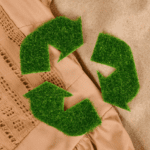Sustainability, circular economy and environment
The table below summarises the most recent publications regarding the environment, circular economy, and sustainability (non-exhaustive):
| Entity | Date | Publication |
| Secretariat of Environment and Natural Resources of Mexico | 24/07/2023 | Official Mexican Standard NOM-152-SEMARNAT-2023, which establishes the criteria and specifications of the content of sustainable forest management programs for the use of timber forest resources in forests, jungles and vegetation in arid areas. |
| European Commission | 18/08/2023 | Opinion of the European Economic and Social Committee on the proposal for a Directive of the European Parliament and of the Council on common rules promoting the repair of goods and amending Regulation (EU) 2017/2394 and Directives (EU) 2019/771 and (EU) 2020/1828 (COM(2023) 155 final — 2023/0083 (COD)) |
| European Commission | 18/08/2023 | Opinion of the European Economic and Social Committee on the proposal for a directive of the European Parliament and of the Council on substantiation and communication of explicit environmental claims (Green Claims Directive) (COM(2023) 166 final — 2023/0085 (COD)) |
| French Ministry of ecological transition and territorial cohesion | 31/08/2023 | Decree No. 2023-843 of 30 August 2023 amending Decree No. 2022-410 of 23 March 2022 relating to the terms of certification and control of the European Ecolabel |
| European Commission | 24/08/2023 | Energy labelling – electronic displays (review of requirements)
This consultation covers both the Eco-design and Energy labelling interlinked initiatives. |
| European Commission | 04/09/2023 | EU consumer programme – evaluation
Its actions aim to support consumer protection objectives where they cannot be sufficiently achieved by Member States acting alone due to the cross-border nature of the issues involved. |
| UK Department for Environment, Food & Rural Affairs | 04/09/2023 | The Fluorinated Greenhouse Gases (Amendment) Regulations 2023
Statutory guidance was published which contains several statutory instruments and explanatory memorandums. |
| European Parliament | 20/09/2023 | Eco-design requirements for sustainable products in “A European Green Deal”. |
| UK Government | 13/09/2023 | The Greenhouse Gas Emissions Trading Scheme Auctioning (Amendment) Regulations 2023 (S.I. 2023 No. 994). |
| Ministry of Ecological Transition and Territorial Cohesion of France | 14/09/2023 | Order of 30 August 2023 relating to the identification of dangerous substances in products generating waste.
This decree establishes the supplementary list of dangerous substances whose level of concern is comparable to substances of very high concern, and of which are not published on the list mentioned in Article 59, paragraph 10, of Regulation (EC) No 1907/2006 related to the identification of hazardous substances in waste-generating products. |
| Ministry of Ecological Transition and Territorial Cohesion of France | 14/09/2023 | Order of 30 August 2023 relating to the provision of information on the presence of dangerous substances in products generating waste by means of an application. |
| European Commission | 20/09/2023 | Chemicals regulation – update of EU rules for test methods
Status: Public initiative in preparation and planned for fourth quarter 2023. |
| European Commission | 20/09/2023 | National Emission Reduction Commitments Directive – evaluation
Status: Public initiative in preparation and planned for fourth quarter 2024. |
| European Commission | 20/09/2023 | Endangered wild fauna and flora – updated rules for permits, certificates and other documents (CITES)
Status: Public initiative in preparation and planned for second quarter 2024. |
| European Commission | 21/09/2023 | Environmental Footprint methods
The European Commission has proposed the Product Environmental Footprint and Organisation Environmental Footprint methods as a common way of measuring environmental performance. |
| European Commission | 21/09/2023 | PEF Apparel & Footwear
There is a plethora of methodologies, certifications, and product labels used in the apparel & footwear industry. The Product Environmental Footprint (PEF) is a methodology measuring the environmental footprint of products following similar rules across the European Union. |
| Re-Fashion | 21/09/2023 | Apparel & Footwear Product Environmental Footprint Category Rules (PEFCR) |
Publications related to national requirements for Extended Producer Responsibility (ERP)
The table below summarises the recent publications regarding national requirements of extended producer responsibility (ERP):
| Date | Country | Title |
| 2/5/07/2023 | UK | One year more to discuss the ERP ‘s scheme design.
New rules to ensure packaging producers pay for the cost of recycling their packaging will be deferred a year from October 2024 to 2025. |
| 01/08/2023 | Netherland | Ban on plastic straws, plates, and other single-use plastics
New rules will be introduced for disposable plastic cups and food packaging. EPR from 1 January 2023 applies to:
EPR as of 31 December 2024:
|
| 01/08/2023 | Netherland | Contribute to cleaning up plastic litter
EPR applies to the party that first brings the product to market in the Netherlands, producers as well as importers. In addition, other parties in the sales or waste chain may have responsibilities, such as distributors (including retail) |
| 30/08/2023 | France | Opinion relating to the values of the packages used in the formula for calculating the internal costs of an eco-organization to be taken into account in the calculation of the balancing between holders of approval for household packaging. (Text nº 70) |
| 16/09/2023 | France | Order of September 7, 2023 amending the order of December 12, 2022 relating to data from extended producer responsibility (EPR) sectors. (Text nº 13).
Law No. 2020-105 of February 10, 2020 provides that producers subject to the principle of extended producer responsibility (EPR) and eco-organizations transmit each year to the authority responsible for monitoring and observation of the sectors REP, (ADEME), information relating to the quantity of waste generated. |
| 21/09/2023 | UK | Update the following guidance related to ERP:
|
Find out more about EPR in our article.
New restriction for microplastics
On the 27th September 2023, the European Commission published an amendment to the Regulation (EC) No 1907/2006 (REACH) on intentionally added microplastics restriction.
The amendment consists of a new entry 78 in Annex XVII under the EU chemical legislation REACH which restricts synthetic polymer microparticles and two new appendices 15 and 16 which indicate rules on proving degradability and solubility of these microplastics.
This restriction covers all intentionally added synthetic polymer particles below five millimetres that are organic, insoluble and resist degradation and indicates that they “Shall not be placed on the market as substances on their own or, where the synthetic polymer microparticles are present to confer a sought-after characteristic, in mixtures in a concentration equal to or greater than 0,01 % by weight.”
Inside the scope of this new restriction: fragrances, cosmetics, detergents, fabric softeners, glitter, toys, medicine and medical device, fertilisers, granular infill material used on artificial sport surfaces amongst others.
This new amendment will come into force on the 17th October 2023 with different transitional periods for application of the restriction in specific type of uses and for suppliers to provide specific information and labelling requirements on certain products. Below is a summary table:
| Transitional periods in specific type of uses | |
| Date | Category or type of product |
| 17th October 2027 | Rinse-off products unless such products are covered by the line of this table or contain synthetic polymer microparticles for use as an abrasive, i.e. namely to exfoliate, polish or clean (“microbeads”). |
| 17th October 2028 | Detergents, waxes, polishes and air care products, unless those products are covered by the first line of this table or contain microbeads. |
| 17th October 2028 | Fertilising products which do not fall within the scope of Regulation (EU) 2019/1009. |
| 17th October 2028 | Products for agricultural and horticultural uses not covered by the previous lines of this table. |
| 17th October 2029 | Synthetic polymer microparticles for use in the encapsulation of fragrances. |
| 17th October 2029 | Leave-on products unless such products are covered by the previous lines of this table. |
| 17th October 2029 | Devices (Regulation (EU) 2017/745), unless those devices contain microbeads. |
| 17th October 2031 | Plant protection products and seeds treated with those products, and biocidal products. |
| 17th October 2031 | Granular infill for use on synthetic sports surfaces. |
| 17th October 2035 | Lip, nail and make-up products, unless such products are covered by the previous lines of this table or contain microbeads. |
| Transitional periods for suppliers to provide specific information and labelling requirements | |
| Date | Category or type of product |
| 17th October 2025 | Suppliers of synthetic polymer microparticles for use at industrial sites, shall provide the following information:
|
| 17th October 2025 | Suppliers of food additives, synthetic polymer microparticles which are contained by technical means, synthetic polymer microparticles the physical properties of which are permanently modified during intended end use and synthetic polymer microparticles which are permanently incorporated into a solid matrix, shall provide instructions for use and disposal explaining to professional users and the general public how to prevent releases of synthetic polymer microparticles into the environment. |
| 17th October 2026 | Suppliers of vitro diagnostic device products shall provide instructions for use and disposal explaining to professional users and the general public how to prevent releases of synthetic polymer microparticles into the environment. |
| From 17th October 2031 until 16th October 2035 | Suppliers of lip, nail, and make-up products containing synthetic polymer microparticles shall provide the following statement:
“This product contains microplastics.” Note: Products placed on the market before the 17th October 2031 are not required to bear that statement until the 17th December 2031. |
Note:
|
|
| Information to submit to the ECHA by 31 May of each year | ||
| Date | Type of operator | Information |
| 2026 | Manufacturers and industrial downstream users of synthetic polymer microparticles in the form of pellets, flakes, and powders used as feedstock in plastic manufacturing at industrial sites |
|
| 2027 | Other manufacturers of synthetic polymer microparticles and other industrial downstream users using synthetic polymer microparticles at industrial sites | |
| 2027 | Suppliers of medical devices, food additives, in vitro diagnostic devices, synthetic polymer microparticles which are contained by technical means, synthetic polymer microparticles the physical properties of which are permanently modified during intended end use and synthetic polymer microparticles which are permanently incorporated into a solid matrix placed on the market for the first time to professional users and the general public. |
|
The restriction shall not apply to placing on the market of synthetic polymers microparticles, on their own or in mixtures, before the 17th October 2023. However, this date shall not apply to the placing on the market of synthetic polymers microparticles for uses listed in the first table of this bulletin.
For more information, consult the official publication in European Commission website here.
Eurofins offers a range of microplastic testing services.
Ensure the cosmetic product biodegradability
Are you ensuring the biodegradability of your cosmetic products? Biodegradation is the breakdown of matter into smaller parts and the eventual conversion into substances that are reused in biological cycles or accumulated in the environment.
The demand for biodegradable products from consumers has become increasingly prevalent in recent years, correlating with a general drive towards sustainability and corporate social responsibility. With more people focusing on the end-of-life (EOL) cycle of their products, it has become imperative to have an accurate system in place not only to validate degradability claims, but to assess toxicity of those degradation products and provide alternative solutions in cases where biodegradation is not favourable.
Biodegradability, disintegration, and compost tests are carried out in order to study the environmental and toxicological impact of materials. There are various standards and test methods.
Different local legislation governs the use of environmental claims. French legislation under the AGEC (Anti-Waste for a Circular Economy) law forbids the use of the term ‘biodegradable’ as a promotional term for plastics to prevent any misunderstanding and to reduce greenwashing.
You can rely on the Eurofins Cosmetics & Personal Care network of laboratories to assess the biodegradability of your products and use of environmental claims to ensure full compliance with the regulation.
For assistance with complying with the above regulations, contact us using the link below or view our list of sustainability services.



